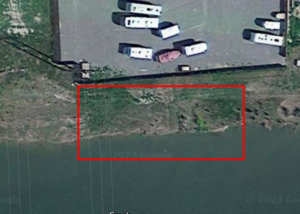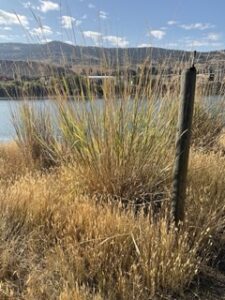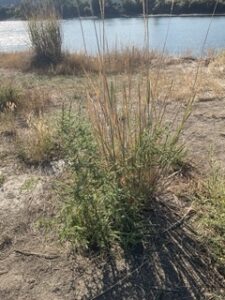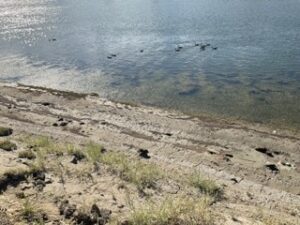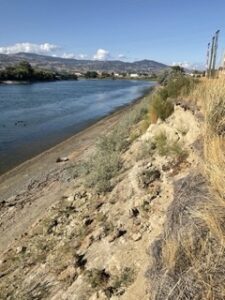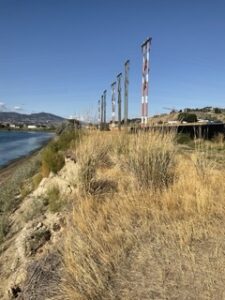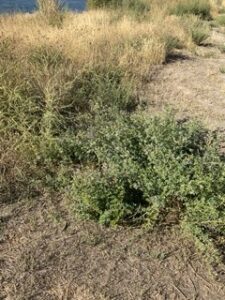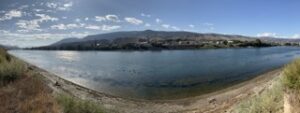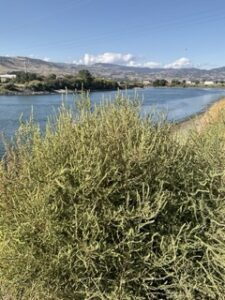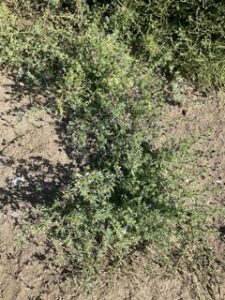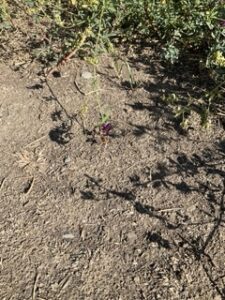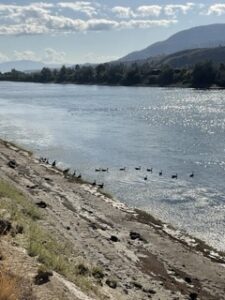The area I have chosen to observe is a small bluff overlooking the Thompson River behind my house in Kamloops, B.C. The specific area I observed is about 1500 sq.ft. and the vegetation included many low growing shrubs, some grasses of varying heights, and some flowering plants as well. I looked at the site at 10am this morning, and the weather was about 16 degrees Celsius, sunny with a few clouds and a slight breeze coming through. We are transition from Summer to Fall here in Kamloops so the sun isn’t as harsh and temperatures should be dropping soon. Hopefully the snow stays away long enough for me to collect data!
I noticed that the more lush, green looking plants were often surrounded by honeybees. I also noticed that the distribution of these plants were in clumps of 3-4, but over the entire landscape those clumps were distributed several feet from one another.
Are bees the main pollinator of this plant and does that dictate their resulting distribution? Rather than wind dispersal which would maybe cause a more uniform distribution?
I also noticed that there was a clear dichotomy of the plants growing on the slope of the bluff versus atop it. At first glance, it seemed that the plants on the slope of the bluff had thicker branches and roots, and seemed overall healthier, while much of the vegetation on the leveled surface was dead and dried out aside from the occasional green shrub.
Does this have to do with elevation, soil quality, or the root strength of the plant? Maybe the plants on the slope have stronger roots because they have to withstand the water currents when the water is high. Their health could be due to possible increased moisture content in the soil closer to the river.
I noticed that the plants in the grass family had great variation in height and size, and their subsequent abundance. The taller and more robust grasses were fewer in abundance and existed in clumps that were sparse along the bluff. For the low growing grasses, they covered what I thought to be the majority of the ground surface. I also noticed that some of the taller grass plants had broken off from the top of the bluff and crumbled down onto its slope.
Does their mass and height dictate their distribution and abundance, or is it a morphological characteristic? Perhaps the low growing grasses are better suited for harsh winds while taller ones suffer because the stems buckle and topple over. It may also be a matter of whether the grass’ seed are shattering or non shattering.
I’m feeling most hopeful about my second question, as I think the first and last one need more refining and would probably be difficult to investigate.
